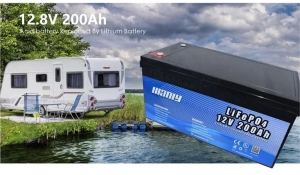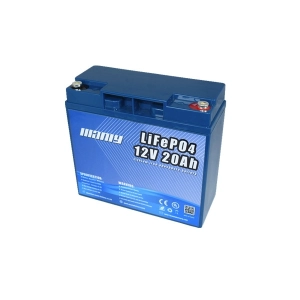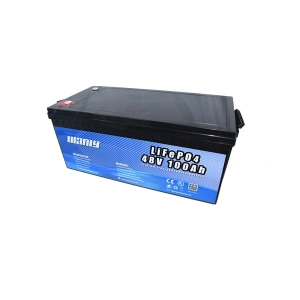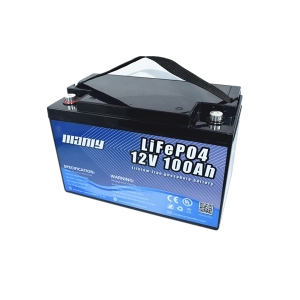2025 Marine Battery Sizes: Optimal Choices
Inhaltsverzeichnis
- 2025 Marine Battery Sizes: Optimal Choices
- Marine Battery Size Calculator
- Was sind Schiffsbatterien?
- Die Unterschiede erkennen: Schiffs- und Autobatterien
- Auswahl der richtigen Schiffsbatterie für Ihre Bootsanforderungen
- Wählen Sie die perfekte Schiffsbatteriegröße für Ihr Boot
- BCI Battery Group Sizes
- Größentabelle für Batteriegruppen und Lithiumäquivalent
- Grundlegendes zum Laden von Schiffsbatterien: Blei-Säure vs. Lithium
- Wie lange halten Schiffsbatterien?
- Erfahren Sie mehr über Batterie
Marine Battery Size Calculator
Marine Battery Size Calculator Explanation
Navigating the vast seas can be daunting, but ensuring the correct marine battery size is crucial for a smooth journey. Our Marine Battery Size Calculator helps you estimate the appropriate battery capacity for your needs by considering various factors such as total power demand, usage time, battery voltage, environmental conditions, emergency backup time, and the type of battery, including AGM, Gel, Flooded, and LiFePO4 Battery options.Understanding the Factors:- Total Power Demand (Watts): This is the overall power consumption of all electrical devices on your boat. Accurately estimating this ensures your battery can handle the load.
- Usage Time (Hours): Knowing how long you plan to use your devices helps calculate the required battery capacity. Longer usage times will naturally require a higher-capacity battery.
- Battery Voltage (Volts): Common marine battery voltages are typically 12V or 24V. Our Battery Size Calculator adjusts for different voltages to provide accurate results.
- Environmental Conditions: The marine environment can be harsh, with factors like temperature, humidity, and vibration affecting battery performance. While our calculator considers these factors, it's essential to account for your specific conditions for the best results.
- Emergency Backup Time (Hours): A backup plan is crucial. This factor estimates the additional capacity needed to ensure your devices continue operating in case of an emergency.
- Total Wattage of Electrical Devices (Watts): This includes all devices that draw power from the battery. Accurate input here ensures the calculator provides a realistic estimate.
- Akku-Typ: Different batteries have varying efficiencies and capacities. Our calculator includes options for AGM, Gel, Flooded, and LiFePO4 Battery types to match your requirements.
- Battery Age (Years): Older batteries may not perform as well as new ones. Factoring in your battery's age helps provide a more accurate estimate.
Was sind Schiffsbatterien?
Schiffsbatterien play a crucial role in powering boats and various watercraft. Unlike typical automotive batteries, they are specifically engineered to handle the unique demands of marine environments. These batteries come in two main types: starter and deep-cycle, each serving a distinct purpose in your boat's operation.Das besondere Design von SchiffsbatterienMarine batteries differ significantly from standard car batteries. They are crafted to endure harsh conditions like high vibrations, extreme temperatures, and potential moisture exposure common in marine settings. Their design often includes thicker, more robust plates and maintenance-free structures, reducing the risk of corrosion and fluid loss. Moreover, some advanced models, like Absorbent Glass Mat (AGM) batteries, boast sealed constructions, enhancing capacity and preventing harmful leaks.Auswahl der richtigen SchiffsbatterieChoosing a suitable marine battery is vital for your vessel’s performance and safety. Marine starter batteries are designed to deliver quick, high-energy bursts necessary for starting engines. In contrast, deep-cycle batteries provide a consistent energy flow over extended periods. Deep-cycle variants are ideal for powering gadgets like fish finders, radios, and trolling motors when the main engine is off.Vorteile von SchiffsbatterienMarine batteries offer several advantages over traditional batteries, especially in their dual-function capabilities. Many marine batteries can serve as both starter and house batteries, catering to boats' varied energy needs. Their versatility is further enhanced by the availability of different sizes to fit various watercraft.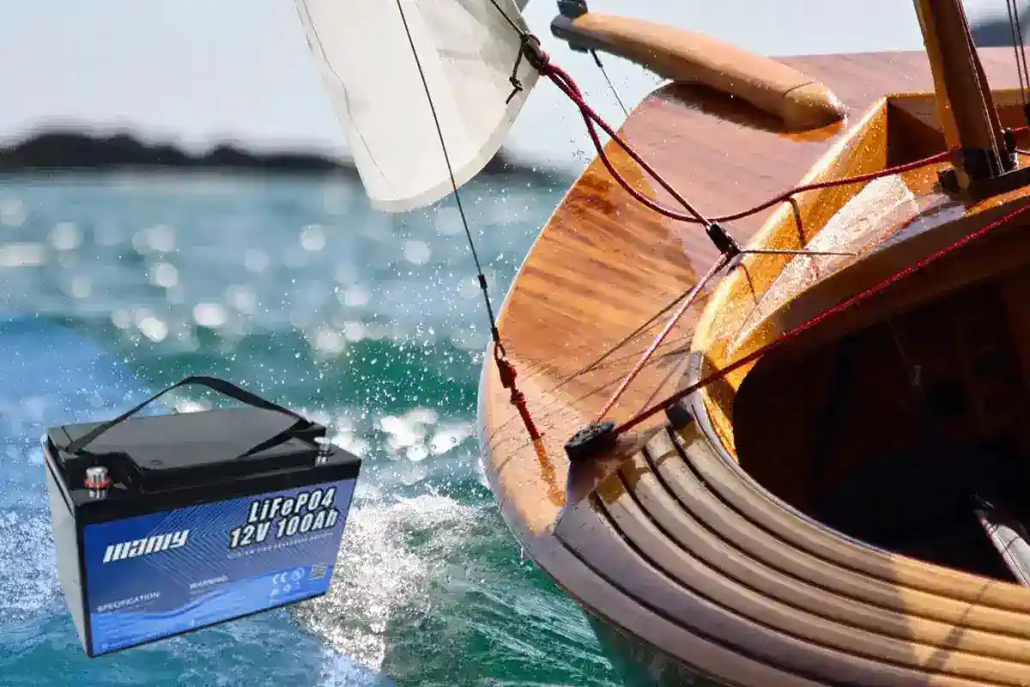
Die Unterschiede erkennen: Schiffs- und Autobatterien
Not all batteries are created equal when it comes to powering vehicles. This is especially true when comparing marine batteries with car batteries. Understanding these differences is crucial for ensuring the correct battery is used for the right application, whether for a boat or a car.Robustes Design von SchiffsbatterienSchiffsbatterien sind speziell dafür konstruiert, den Anforderungen der Wasserumgebung gerecht zu werden. Diese Batterien verfügen über dickere Platten, die ihnen die erforderliche Widerstandsfähigkeit verleihen, um den in Meeresumgebungen typischen ständigen Bewegungen und Vibrationen standzuhalten. Diese robuste Konstruktion ist von entscheidender Bedeutung, da sie Kurzschlüsse verhindert, die durch die Stöße rauer Gewässer entstehen könnten.Energieabgabe und -nutzungMarine batteries deliver power differently from car batteries. While car batteries are designed to unleash high currents in short bursts to start the engine, marine batteries are tailored for more extended, steadier power outputs. This constant energy release is essential for maintaining various boat systems like gauges, lights, and pumps, ensuring they run smoothly over extended periods.Vibrationsfestigkeit und BesonderheitenBei Schiffsbatterien geht es nicht nur um stabile Platten; Im Vergleich zu Autobatterien zeichnen sie sich außerdem durch eine höhere Vibrationsfestigkeit aus. Diese Eigenschaft ist entscheidend für ihre Langlebigkeit und Zuverlässigkeit in der schwankenden Meeresumwelt. Darüber hinaus sind die Anschlüsse von Schiffsbatterien speziell für den Einsatz auf Booten konzipiert und spiegeln den spezifischen elektrischen Bedarf von Schiffsfahrzeugen wider.Arten von SchiffsbatterienMarine batteries come in several varieties, each serving a distinct purpose. These include Starting batteries, Deep-Cycle batteries, Dual-Purpose batteries (which combine starting and deep-cycling functions), and Lithium Deep-Cycle batteries. Each type caters to different marine energy needs, from starting engines to powering onboard equipment.Auswahl der richtigen Schiffsbatterie für Ihre Bootsanforderungen
Selecting the perfect marine battery is a crucial decision for any boat owner. The correct battery powers your boat and ensures safety and reliability on the water. Understanding what to look for in a marine battery is key to making an informed choice.Assessing Your Boat's Power NeedsThe first step in choosing a marine battery is to evaluate what you need it to do. Do you need a battery to start the boat and power a few essential items, or do you have a range of electronics and appliances that require power? The answer to this question will guide your choice.Eine Batterie oder zwei?For smaller boats with limited power demands, a single battery might suffice to start the boat and run a few electronics. However, if you have a larger boat or one with higher power needs, it’s wise to consider two separate batteries. This approach involves using one battery to start the boat and a second deep-cycle battery to run electronics and appliances.Die Vorteile einer zweiten BatterieHaving a separate deep-cycle battery for power applications is highly recommended. This strategy reduces the risk of draining your starting battery, which could leave you stranded. A dedicated deep-cycle battery ensures that there's always enough power to start the boat, no matter how much energy your appliances and electronics consume.Deep-Cycle-Batterien: Eine zuverlässige WahlDeep-cycle batteries are the ideal choice for those needing a battery for power applications. These batteries are designed to provide consistent energy over an extended period, making them perfect for powering a wide range of marine electronics and appliances.Wählen Sie die perfekte Schiffsbatteriegröße für Ihr Boot
Choosing the right size for your marine battery is a key decision for any boat owner. The size depends on whether the battery is for starting the engine or powering other devices (known as deep cycle use). Most boaters benefit from having two different battery systems.Motorstarterbatterien: Worauf Sie achten sollten
The size of a battery for starting your boat's engine is usually determined by its Marine Cranking Amps (MCA). This measures the power a battery can release quickly at 32 degrees Fahrenheit. Ensuring your starting battery has enough MCA to start your engine reliably under various conditions.A standard guideline for gasoline engines is one cranking amp per cubic inch of engine size. Diesel engines require more power and should have about 2 cranking amps per cubic inch. For example, a gasoline engine with 366 cubic inches should have a battery with at least 400 MCA.Auswahl von Batterien für Haus- oder Hilfsstrom
Selecting the right size for house batteries is a bit more complex. These batteries power devices and appliances on your boat, so their requirements vary widely. Calculate the total watt-hours you need by multiplying the wattage of each device by how long you'll use it between charges. Choosing a battery slightly more significant than your total watt-hour calculation is wise to ensure you have enough power.Die Vorteile von Lithium batterien
Modern lithium batteries are often recommended for superior performance over lead-acid batteries. They can handle deep discharges without damage and offer thousands more cycles of use, making them a more durable and reliable choice for both starting and deep-cycle applications.Warum zwei Batteriesysteme ideal sind
Having two separate systems — one for starting the engine and another for your devices — is often the best approach. This setup ensures that using power for your devices won’t drain the battery needed to start your engine.BCI Battery Group Sizes
Introduction to BCI and Battery Group SizesThe Battery Council International (BCI), a non-profit trade association established in the 1920s, is a key player in standardizing Battery Group Sizes. BCI's role in supporting the lead-acid battery industry is evident in its development of technical standards, including creating specific group sizes for various battery applications. These group sizes, a result of BCI's efforts, provide manufacturers and consumers with a clear understanding of batteries' general dimensions and capacities, facilitating the search for suitable replacements.Common Group Sizes in Marine ApplicationsSeveral Battery Group Sizes are particularly relevant in marine applications. These include Group 24, Group 27, Group 31, and 8D. These sizes indicate the maximum dimensions of a battery, allowing equipment manufacturers to optimize battery storage spaces. Generally, as the group size increases, so do the battery's overall dimensions and capacity, making these larger batteries suitable for more demanding applications.Why Group Sizes MatterUnderstanding Battery Group Sizes is not just about technical knowledge but practical benefits. By adhering to these standardized sizes, manufacturers ensure that batteries are interchangeable and fit within the allocated spaces in various equipment. This standardization simplifies finding replacement batteries, especially in specialized fields like marine applications, where space and reliability are critical. So, knowing and adhering to these group sizes can save you time and effort in your daily tasks.By keeping these group sizes in mind, you are not just ensuring that the battery you choose will fit perfectly and deliver the necessary performance for your specific application. You are also taking a proactive step towards responsible equipment selection, which is crucial for the smooth operation of your systems.BCI Battery Group Sizes Chart| BCI Group # | Length (in) | Width (in) | Height (in) |
| 24 | 10.25 | 6.81 | 8.88 |
| 24F | 10.75 | 6.81 | 9 |
| 24H | 10.25 | 6.81 | 9.38 |
| 24R | 10.25 | 6.81 | 9 |
| 24T | 10.25 | 6.81 | 9.75 |
| 27 | 12.06 | 6.81 | 8.88 |
| 27F | 12.5 | 6.81 | 8.94 |
| 27H | 11.75 | 6.81 | 9.25 |
| 31 | 13 | 6.72 | 9.44 |
| 8D | 20.75 | 11.13 | 9.88 |
Größentabelle für Batteriegruppen und Lithiumäquivalent
Marine Battery Group Size Chart
| BCI Group # | Spannung | Typ | Part # | Amp Hours | Continuous (A) | Peak (A) |
| 24 | 12V | Deep Cycle | RB60 | 60 | 60 | 140 |
| 24 | 12V | Deep Cycle | RB75 | 75 | 75 | 150 |
| 24 | 24V | Deep Cycle | RB24V40 | 40 | 30 | 70 |
| 27 | 12V | Deep Cycle | RB80 | 80 | 80 | 160 |
| 31 | 12V | Deep Cycle | RB100 | 100 | 100 | 200 |
| 31 | 24V | Deep Cycle | RB24V52 | 52 | 50 | 100 |
| 31 | 12V | Dual Purpose | RB100-HP | 100 | 100 | 800 |
| 8D | 12V | Deep Cycle | RB200 | 200 | 100 | 200 |
| 8D | 12V | Deep Cycle | RB300 | 300 | 100 | 200 |
| 8D | 12V | Dual Purpose | RB300-HP | 300 | 100 | 800 |
Die beste Schiffsbatterie der Gruppe 24
When selecting a marine battery, size matters. Group 24 batteries are popular with many boaters due to their compact dimensions and reliable performance. They are designed to fit most boats easily, making them versatile.Abmessungen und Passform von Batterien der Gruppe 24A Group 24 marine battery typically measures 10.2 inches in length, 6.8 inches in width, and 9.3 inches in height. This size is ideal for boating because it combines efficient space usage with adequate power capacity.Die leichteste Schiffsbatterie der Gruppe 24One standout option is the MANLY 12V 60Ah lithium battery. This battery offers a dual-purpose function, providing both 1,000 Cold Cranking Amps (CCA) for engine starting and 60 Amp Hours of deep cycle power. Its major advantage is its weight - at just 16.5 pounds, it's significantly lighter than traditional marine batteries, making it an excellent choice for applications like kayak fishing, trolling motors, and starting smaller outboard motors.Haltbarkeit und LebensdauerNeben seinem leichten Vorteil ist dasMANLY 12V 60Ah Lithium batterieverfügt über eine viel längere Lebensdauer – bis zu fünfmal länger als herkömmliche Schiffsbatterien. Diese längere Haltbarkeit bedeutet weniger Austauschvorgänge und einen besseren langfristigen Wert.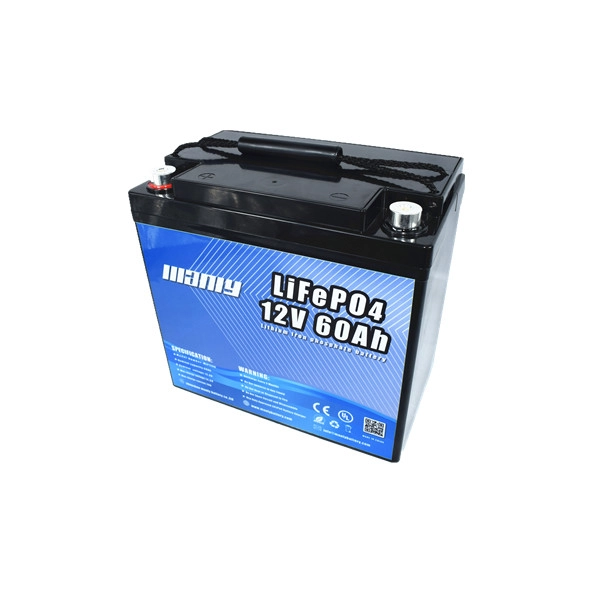 Garantie und ZuverlässigkeitA crucial aspect of any marine battery is its warranty and reliability. The MANLY 12V 60Ah battery comes with a 10-year warranty, providing boaters with peace of mind and assurance of quality and durability.
Garantie und ZuverlässigkeitA crucial aspect of any marine battery is its warranty and reliability. The MANLY 12V 60Ah battery comes with a 10-year warranty, providing boaters with peace of mind and assurance of quality and durability.Entdecken Sie Schiffsbatterien der Gruppe 27 für Ihre Bootsbedürfnisse
Choosing the correct marine battery size is critical for optimal boat performance. Group 27 marine batteries stand out among the various sizes available due to their common usage and reliability. They offer a balance of size, power, and durability, making them a popular choice among boaters.Batterieabmessungen der Gruppe 27A typical Group 27 marine battery measures 11 inches in length, 7.3 inches in width, and 9.3 inches in height. This size makes it slightly larger than the Group 24 battery, providing more power capacity while maintaining a manageable size for most boats.Erweiterte Optionen: Lithium-Eisenphosphat-BatterienIn Group 27 batteries, the MANLY 12V 100Ah Lithium batterieist eine bemerkenswerte Option. Diese Lithium-Eisenphosphat-Batterie zeichnet sich durch überlegene Leistung und leichtes Design aus. Sie bietet die doppelte nutzbare Leistung und das halbe Gewicht einer herkömmlichen AGM- oder Blei-Säure-Batterie der Gruppe 27.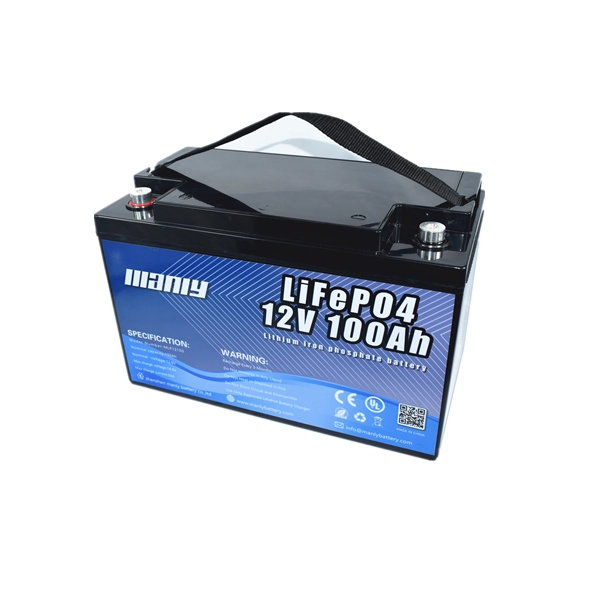 Langlebigkeit und HaltbarkeitOne of the most significant advantages of the MANLY 12V 100Ah lithium battery is its lifespan. It lasts up to five times longer than standard AGM or lead-acid batteries, providing exceptional value. This extended lifespan makes it a cost-effective and reliable choice for frequent boaters.Garantie und ZusicherungThe MANLY 12V 100Ah lithium battery has a 10-year warranty, reflecting its high-quality construction and reliability. This long-term warranty offers boaters peace of mind, knowing their investment is protected.
Langlebigkeit und HaltbarkeitOne of the most significant advantages of the MANLY 12V 100Ah lithium battery is its lifespan. It lasts up to five times longer than standard AGM or lead-acid batteries, providing exceptional value. This extended lifespan makes it a cost-effective and reliable choice for frequent boaters.Garantie und ZusicherungThe MANLY 12V 100Ah lithium battery has a 10-year warranty, reflecting its high-quality construction and reliability. This long-term warranty offers boaters peace of mind, knowing their investment is protected.Gruppe 31 Schiffsbatterien
Group 31 sizes are gaining traction in marine batteries due to their optimal balance of size and power. They are particularly suitable for boats with multiple electronic needs and are widely used in the RV industry.Batterieabmessungen der Gruppe 31A Group 31 marine battery is slightly larger than a Group 27, measuring 12.8 inches in length, 6.8 inches in width, and 9.3 inches in height. This size increase allows for more power storage, making it a top choice for boats with extensive electronic systems and use as house batteries in RVs and solar power setups.Fortschritte in der Batterietechnologie: Die MANLY 12V 300Ah Lithium batterieLeading the charge in Group 31 marine batteries is the MANLY 12V 300Ah lithium battery. This battery boasts an impressive 6 times the usable power of traditional AGM batteries while maintaining the exact physical dimensions. With 300 Amp Hours of energy in a compact size, it's a game-changer for boaters and RV enthusiasts.Energiedichte und EffizienzThe MANLY 12V 300Ah lithium battery's high energy density means that it can replace up to six AGM or lead-acid batteries. This efficiency allows for a smaller and more compact battery bank, giving boat owners the flexibility to add power-hungry upgrades like air conditioning, electric grills, or induction stovetops without the need for bulky generators.Dual-Purpose-FunktionalitätThe most significant advantage of the MANLY 12V 300Ah Lithium batteriey is its dual-purpose capability. It provides 300 Ah of deep cycle performance and 1,000 CCA of engine cranking power. This versatility means that a single battery can be used to start engines and run electronics, simplifying the power system on a boat.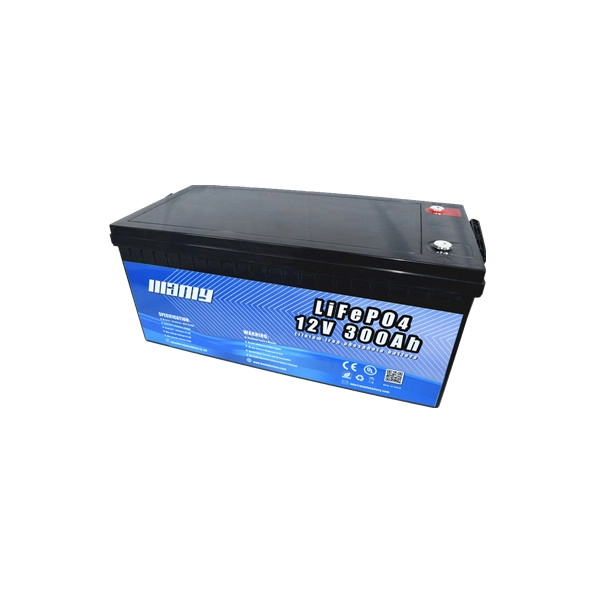
Marinebatterien der Gruppen 34 und 8D
Selecting the correct marine battery is crucial for the optimal performance of boats and RVs. Among various sizes, Group 34 and 8D batteries are notable for their specific applications and advantages.Marinebatterien der Gruppe 34: Kompakte KraftpaketeGroup 34 marine batteries are slightly larger versions of Group 31 batteries. They measure 13.5 inches in length, 6.8 inches in width, and 9.3 inches in height. These dimensions make them ideal for boats requiring more power without significantly increasing the battery size.Die MANLY 12V 300Ah Lithium batterieEine erste Wahl für die Aufrüstung von Batterien der Gruppe 34 ist die MANLY 12V 300Ah Lithium batterie. Diese Batterie zeichnet sich durch ihre außergewöhnliche Energiedichte aus und vereint die Leistung von sechs Batterien der Gruppe 34 in einer. Es bietet eine kompakte und dennoch leistungsstarke Lösung für Schiffsanwendungen.8D-Schiffsbatterien: Für größeren Strombedarf8D batteries are among the most significant marine batteries, measuring 20.75 inches in length, 11.13 inches in width, and 9.88 inches in height. Initially developed for large boats, commercial fishing vessels, and RVs, these batteries offer substantial power for demanding applications.Evolution of 8D Batteries: MANLY's InnovationsMANLY-Batterien haben mit ihrer Lithium-Technologie die 8D-Schiffsbatterien revolutioniert. DerMANLY 12V 200Ah Lithium batterie, bekannt für seine Beliebtheit in Wohnmobilen, Sprinter-Transportern und Booten, bietet die doppelte nutzbare Leistung bei halb so viel Gewicht wie herkömmliche AGM-Batterien. Im Jahr 2023 brachte MANLY die 12-V-300-Ah-Batterie auf den Markt, die in einem kompakteren Gehäuse die vierfache nutzbare Leistung einer Blei-Säure-Batterie bietet. Diese Weiterentwicklung macht die MANLY 12V 200Ah-Batterie zur ultimativen Upgrade-Wahl und bietet die vierfache Leistung, ein Drittel des Gewichts und die fünffache Lebensdauer herkömmlicher 8D-Batterien.Dual-Purpose-FunktionalitätThe MANLY 12V 300Ah battery is not just about increased capacity; it also offers dual-purpose functionality. With 1,000 cold cranking amps, it can efficiently start engines and power a wide range of electronics.Grundlegendes zum Laden von Schiffsbatterien: Blei-Säure vs. Lithium
Proper charging is crucial for maintaining the health and longevity of marine batteries. Understanding the right way to charge different types of marine batteries can ensure optimal performance and extend their lifespan.Laden von Blei-Säure-SchiffsbatterienTraditional lead-acid marine batteries are commonly used and can generally be charged with a regular charger. This type of charger is readily available and usually sufficient for the needs of these batteries.Übergang zu Lithium-SchiffsbatterienModerne Schiffsbatterien nutzen häufig die Lithium-Technologie. Während diese auch mit Standardladegeräten aufgeladen werden können, bietet die Verwendung von Ladegeräten, die speziell für Lithium batterien entwickelt wurden, Vorteile.Die Vorteile spezieller Lithium-LadegeräteA dedicated lithium charger can charge the batteries faster and more effectively than a regular charger. Although this might cost additional, the faster and fuller charge can significantly improve battery performance and lifespan.Besondere Überlegungen zum Laden von Lithium batterien über eine LichtmaschineIt's essential to use a DC-to-DC charger or a lithium alternator controller when charging lithium marine batteries from an alternator. Lithium batteries charge much quicker than lead-acid batteries, and the high power draw could potentially harm the alternator. A controller is necessary to prevent this damage and ensure the battery is charged correctly.Schützen Sie Ihre Lichtmaschine und BatterieUsing a lithium alternator controller or DC to DC charger helps safeguard the alternator from damage due to lithium batteries' rapid charge rate. It also ensures that the battery is charged, controlled, and efficiently.Wie lange halten Schiffsbatterien?
Knowing how long your marine battery will last is crucial for reliable and efficient boating. The lifespan of a marine battery depends on several factors, including its type, usage frequency, and maintenance.Arten von Schiffsbatterien und ihre LebensdauerMarine batteries are mainly of two types: traditional lead-acid and modern lithium batteries. Based on various factors, each type has a different expected lifespan.Blei-Säure-Batterien: Lebensdauer und PflegeLead-acid batteries, commonly used for starting engines, can last up to five or six years with proper care and moderate use. However, without regular maintenance, their life can be significantly shortened to just a year or two. Ensuring they are charged correctly and kept clean is key to extending their life.Lithium-Schiffsbatterien: Langlebigkeit und WartungLithium marine batteries offer a longer lifespan, often a decade or more. One significant advantage of lithium batteries is their low maintenance requirements. Unlike lead-acid batteries, they don't need regular upkeep aside from avoiding physical damage.Faktoren, die die Batterielebensdauer beeinflussenBei der Bestimmung der Lebenserwartung von Schiffsbatterien spielen mehrere Faktoren eine Rolle. Diese beinhalten:- Die Anzahl der Ladezyklen: Wie oft der Akku geladen und entladen wird.
- Nutzungshäufigkeit: Wie regelmäßig der Akku verwendet wird.
- Einsatz- und Lagerbedingungen: Die Umgebung, in der die Batterie verwendet und gelagert wird, wie z. B. Temperatur und Luftfeuchtigkeit.
- Überprüfen und warten Sie Blei-Säure-Batterien regelmäßig.
- Lagern Sie Batterien an einem kühlen, trockenen Ort, um extreme Temperaturen zu vermeiden.
- Stellen Sie sicher, dass die richtigen Ladetechniken verwendet werden.

